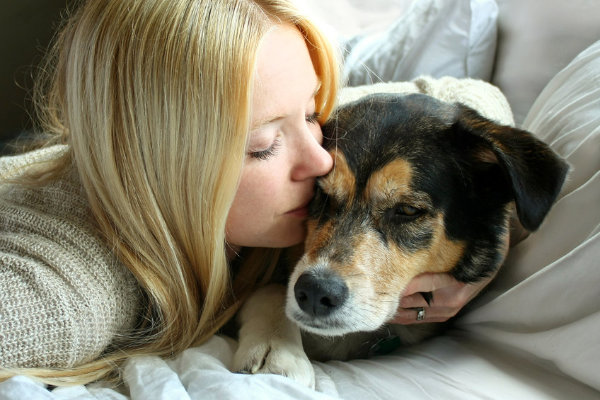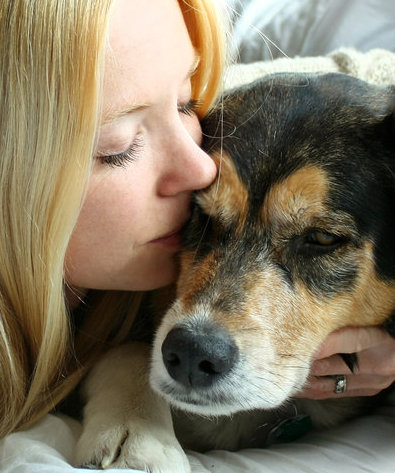Can You Get Ringworm on your feet from a Dog?
Ringworm is a type of fungal infection that can affect the skin on humans. The pathway from dogs to humans is by merely touching or licking plus some extra environmental factors. It is not just owners and others in their households who are vulnerable, but any dog fanciers who have a tendency to pat or stroke any dogs they come across are at risk. A few simple good habits will drastically reduce the risk of developing ringworm on your skin and particularly your feet.
What is Ringworm?
Despite the name “ringworm,” this infection has nothing to do with worms. It is actually a fungal infection, not unlike athlete’s foot. It is more scientifically referred to as a dermatophyte infection. The ‘ring’ in ringworm refers to the circular pattern that develops on the skin when the infection occurs. Ringworm produces spores. They are annoying little devils that can be very tricky to try and get rid of in any environment. They are extremely sturdy and can survive unnoticed for years. All it takes is one single spore in the wrong place at the wrong time to spark off an infection.
Ringworm, the fungal infection, can occur on multiple skin locations as well as hair follicles and nails of both us and our canine friends. When it occurs on the skin it is usually red, scaley, itchy and often has slightly raised, more red, edges. It certainly doesn’t look like normal healthy skin.
Who Can Catch Ringworm?
Anyone can catch ringworm if they come into physical contact with an infected dog, cat, another human or even surfaces. Moist areas are particularly relevant in the development from inactive fungal spore to active fungal infection. If you have an open graze, scratch or wound, you are at risk. You are also vulnerable to a ringworm worm infection if you have eczema. A weak immune system is an increased risk factor for picking up a ringworm infection. This applies to small children, the elderly, anyone undergoing chemotherapy, or who has recently had a transplant or blood transfusion. If you do catch ringworm there is a reasonable chance that you will spread it from one location on your body to another. Your feet are very vulnerable. Simple foot precautions and will help
How Can You Tell if Your Dog has Ringworm?
There are various signs that could indicate your dog has a ringworm infection. The most common is an area of hair loss, within which lies crusty looking skin. In some dogs, the infection looks like a patch of grey skin, whereas in others, it forms what looks like red lesions. The lesions, when they appear, more often do so on the dog’s ears, head, legs or paws. However, they can appear anywhere.
In rare cases, an infected dog can be asymptomatic – not showing any symptoms at all.
What to Do if Your Dog has Ringworm
If you are concerned that your dog could have ringworm, you need to take it to the vet for treatment to diagnose and cure the infection and stop it from spreading to family members or other pets. Your vet will take a sample of the animal’s fur and inspect it under a microscope.
Sometimes a vet may take a sample of the infected skin and transfer it into a dish to see if the infections will grow in laboratory conditions. Although this is the most reliable form of diagnosis, the results can take up to 10 days before you know for certain.
How Dogs are Treated for Ringworm
If ringworm diagnosis is confirmed, the vet will administer medication. The usual form of medication is a tablet that is put in the animal’s food. In some instances, the vet will prescribe a topical lotion or shampoo. More severe infections may require all types of these medications to be administered. As the dog’s owner, you will have to administer the prescribed medication at home, and if you do, it is essential that you wear an apron and protective gloves.
How to Tell if You Have Got Ringworm
In humans, a ringworm infection is characterised by red circular rashes appearing on your skin. The appearance of these rashes is how ringworm got its name. These rashes are often itchy. If you or anyone in your household has contracted a ringworm infection, it can be remedied with over-the-counter anti-fungal creams from the chemist.
If you haven’t contracted ringworm by the time a vet diagnoses your dog, the chances are you will remain uninfected.
Stop recurring Ringworm infections
If your dog has ringworm and you have children in your household, it’s advisable not to let them touch the dog. Ringworm spores are hardy little buckaroos that can remain alive in an environment for a surprisingly long time. The best thing to do is keep your dog in one room and not let it wander the house until the infection has been eradicated.
Treating the dog alone is not enough. The spores can readily spread throughout a home and will easily trigger reinfection if not dealt with. Carpets and other soft furnishings should be cleaned thoroughly with disinfectant to kill off any hidden spores. Chat to your vet about which disinfectant to use. Don’t forget to clean bedding, clothes, towels and soft toys too.
Good habits for Humans
Ringworm can be easily passed from dogs to their owners and casual contacts. Washing your hands after handling or patting a dog is a ‘must-do’ habits. If you like patting your dog on the tummy with your bare feet, washing you feet is also a ‘must-do habit. I would also encourage you to reconsider any foot kissing-licking habits that you have developed with your canine companion. Foot fungal infections can be painful and very tricky to resolve.


